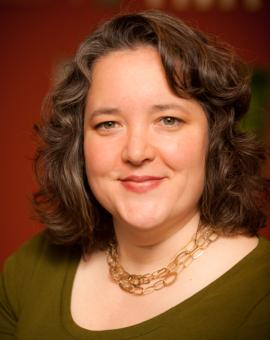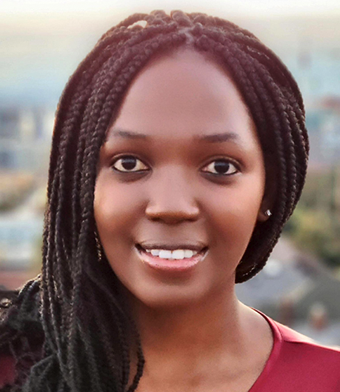Fall 2022
This fall, eight teams competing in life sciences and engineering received a full $50,000 award, three teams received a $10,000 customer discovery support award, and two teams received a $5,000 customer discovery support award. Learn more about them and the vital work they are doing below.
- Mo Li, Electrical and Computer Engineering
- Bingzhao Li
- Qixuan Lin
- Luyu Yang

- Forest Bohrer
LiDAR is a high-resolution 3D imaging technology used for many machine vision applications. It relies on mechanical scanners, which are bulky, fragile, and expensive, preventing greater adoption of LiDAR. Quantum Beam is a novel acousto-optic beam steering and frequency-angular resolving chip-based LiDAR system that is compact and low-cost to manufacture, which opens many new applications.
- Benjamin Freedman, Nephrology
- Erica Jonlin
- Randy Fennel
- Max Frank
- Hongxia Fu
- Todd Smith

- Frieda Chan
Plurexa has developed the human MiniKidney™ platform, which recreates features of the kidneys to model disease in a petri dish. MiniKidney has enabled the discovery of a new therapeutic approach for treating polycystic kidney disease that results in kidney failure, which affects millions of patients worldwide and remains uncured.
- Ryan Jense, Mechanical Engineering
- Per Reinhall, Mechanical Engineering
- Yifang Hou
- Haonan Peng
- Yunhan Wang
- Jack Wu
- Jiaqi Yao
- Tintin Zhang
- Jon Eddy
- Matt Vasey

- Judy Bridges
Blood pressure is a key metric; even a few minutes of abnormal levels can result in life-threatening outcomes in surgery or ICU care. The only high-accuracy, real-time solution is highly invasive atrial lines that many at-risk patients cannot receive. The Pressurge team is developing a novel noninvasive solution using deep learning and ECG and PPG signals to accurately determine blood pressure in real time.
- Sarah Kolnik, Pediatrics
- Ulrike Mietzsch
- Pierre D. Mourad
- Tommy R. Wood
- Mike Blume

- Jennifer McCullar
Brain injury in term and preterm babies most commonly results from acute or chronic hypoxic ischemia, leading to lifelong injury such as cerebral palsy, but current monitors do not accurately measure brain oxygenation due to the differences in adult and neonate physiology, resulting in missed opportunities for critical interventions. This team is developing a monitor with additional probes and an algorithm to account for neonates’ changing physiology to give clinicians accurate and actionable information.
- Joshua Smith, Electrical and Computer Engineering
- Jared Nakahara
- Nadya Peek
- Mark Kotzer

- Forest Bohrer
Current mixing technologies used by countless biology labs rely on manual and robotic physical based methods; sample loss and poor mixing result in poor yields and inaccurate results. The Levity robotic liquid mixing system helps academic labs, biotechnology firms, and pharmaceutical companies increase their chemistry process yield by thoroughly mixing reactants together and preventing the loss of costly sample material by using cutting-edge acoustic levitation systems to perform non-contact sample mixing and containment.
- Jonathan Reichel, Laboratory Medicine
- Gavin Ha
- Swati Shree
- Terri Butler
- Jon Eddy
- Hana Gage

- Jennifer McCullar
This team has developed a simple, noninvasive platform for liquid biopsy to help every patient and doctor by classifying disease characteristics in nearly real time. This improves the health outcomes associated with disease compared to existing standards of care.
- David Baker, Biochemistry
- Goncalo Bernardes
- Derrick Hicks
- Daniel Silva Manzano
- Jilliane Perkins
- Gregory Qushair

- Dennis Hanson
This lab uses computational protein design to make a class of proteins called minibinders, which binds the same cancer targets as antibodies but at a fraction of the size. This work has created minibinder-drug conjugates, which we believe will be safer and more effective than the corresponding ADCs.
- Michael Bailey, Applied Physics Laboratory
- Adam Maxwell
- Jessica Urban

- Lisa Norton
Kidney stones are deadly for many pets, where the options are either a risky and expensive surgery or to euthanize the animal. We have developed an accessory for existing ultrasound machines that safely breaks up kidney stones, allowing them to pass. It’s undergoing human approvals that with a small investment can be adapted for animal use to make veterinary kidney stone treatment safe and routine.
- Sawyer Fuller, Mechanical Engineering
- Daksh Dhingra
- Vikram Iyer
- Yash Talwekar
- Marty Levine

- Forest Bohrer
Accurate motion capture requires expensive, bulky camera systems to capture the position of objects. This innovation is a dime-sized low-power sensor able to provide comparable motion and position accuracy for physical therapy, VR, and many other applications in sports. This technology untethers motion capture to track every step a runner takes, every throw of a baseball or swing of a tennis racket, providing basic data that could turn a smartphone into a personalized sports coach.
- Bruce Hinds, Materials Science and Engineering
- Barry Fulkerson
- Yushi Zang
- Jonathan Kagle

- Roi Eisenkot
Kidney dialysis patients have only a 40% five-year survival rate, in part due to heart-damaging toxins that current dialyzer membranes cannot remove. This team has discovered a novel removal method for toxins that can be easily incorporated into conventional dialysis machines, greatly improving the longevity and quality of life of dialysis patients.
- Christoph Hofstetter , Neurosurgery
- James Pan
- Natalie Yap
- Gregory Paley

- Laura Dorsey
Current routine post-operative follow-up for spine surgery is based on paper forms, making it resource- and labor-intensive as well as difficult for healthcare providers to assess after surgery. SpineHealthie is a smartphone app which makes it easy for patients to report their post-surgical progress, allowing providers to instantaneously communicate with and track patient’s progress and eliminating the in-person post-operative visit, which saves time and money. It uses large-scale data to build a dynamic community so that patients can know how they are doing in real time.
- Feng Zhang, Radiology
- Zhiquan Shu
- Karim Valji
- Terri Butler

- Shamim Shonibare
Liver cirrhosis, which causes more than 1.3 million deaths annually, can be effectively treated with a carefully placed shunt. Even in the US only 7% of patients receive this life-saving intervention due to the extreme difficulty and risk of the procedure. This team is developing a new device for performing the procedure that greatly increases the success rate and reduces the training needed, making this life-saving procedure widely available.
- Devin MacKenzie, Materials Science and Engineering
- Oliver Nakano-Baker
- Richard Lee
- Shalabh Shukla
- Ian Hameroff

- Forest Bohrer
State-of-the-art tests for infectious disease (swabs, cultures, and blood tests) are invasive and expensiv, and often take days, resulting in decisions by observation and the overuse of antibiotics, which drives a growing medical crisis of antibiotic resistance. Odo is a microchip-based sensor platform that uses a biology-inspired mechanism to enable a new, powerful type of artificial nose, or eNose. The sensor will instantly and noninvasively detect, based on the smell of human breath, diseases such as respiratory viruses, bacterial infections, certain cancers, diabetic ketoacidosis, and epileptic seizures.